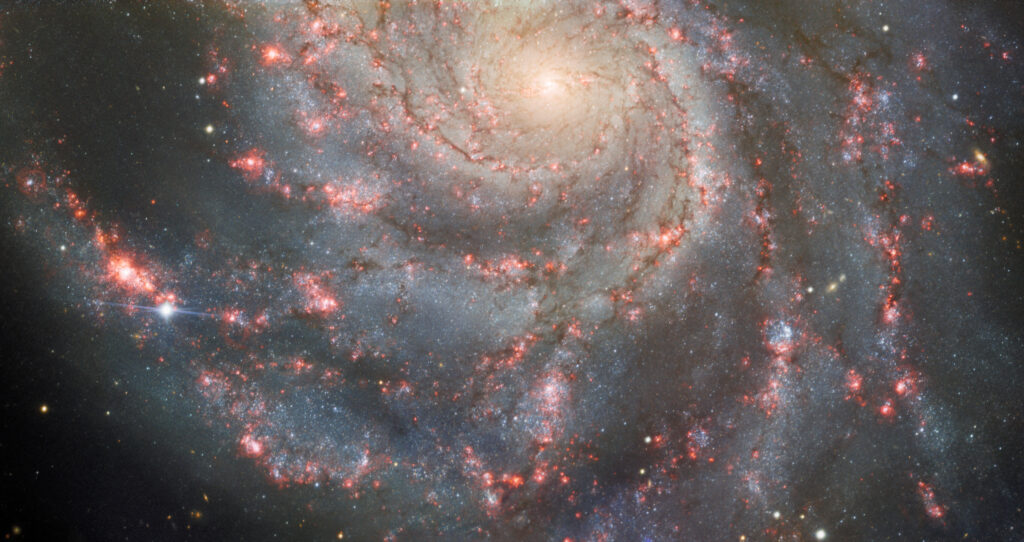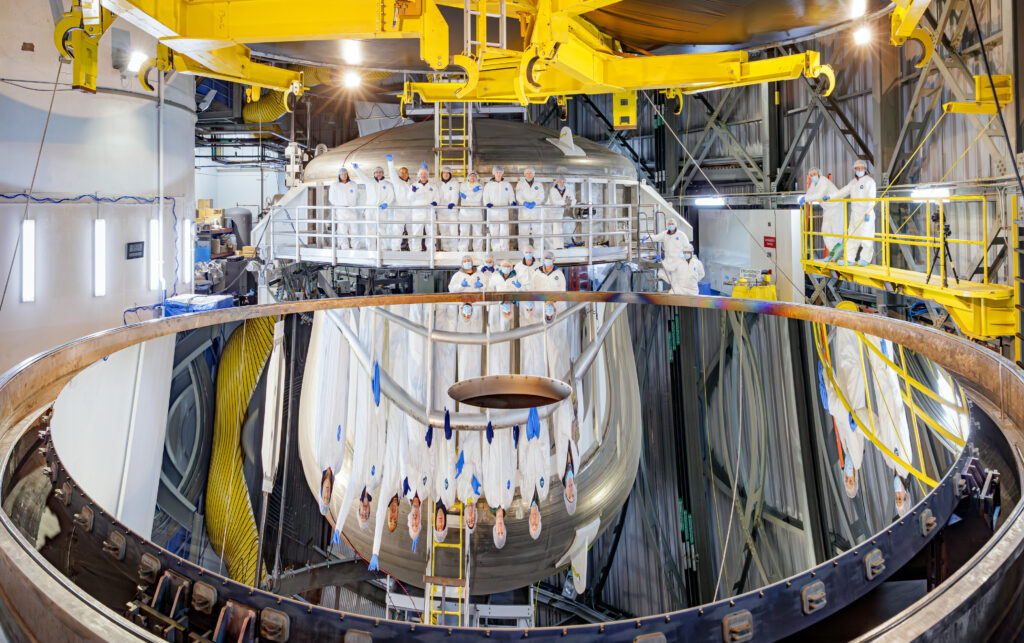Astronomers have published an image of the supernova SN 2023ixf. It was obtained by the Gemini North telescope, which recently resumed observations after a seven-month repair.

SN 2023ixf was discovered on May 19. It broke out in the outer part of one of the spiral arms of the large spiral galaxy M101 (it is sometimes also called the “Pinwheel”), which is located at a distance of 21 million light-years from Earth. This is one of the most photographed galaxies in the night sky, due to its orientation to the Earth, offering a beautiful view of its spiral structure and almost a trillion stars.
Since SN 2023ixf became the closest to our planet and, as a result, the brightest supernova in the last decade, the event attracted a lot of attention from astronomers. Many telescopes were aimed at it. One of them was the 8.1-meter Gemini North, located on top of the extinct Hawaiian volcano Mauna Kea. At the end of 2022, it set out to repair its main mirror. Its restoration was completed just in time for May 2023, which gave the updated telescope a unique opportunity to photograph a supernova.

In the published photo, it can be seen in one of the spiral arms of the galaxy as an exceptionally bright blue star. Astronomers already established that the progenitor of the supernova was a red supergiant that had a mass 12 times greater than the solar one. The star has exhausted its hydrogen reserves and at some point lost the ability to keep its outer layers in a stable state. This led to its collapse. The outer layers of the supergiant collapsed at a rate of up to 23% of the speed of light. Despite the fact that the entire event lasted only ten seconds, during its course, as much energy was released as the Sun produced in 10 billion years of its life.
In addition to the supernova, we can also admire the beautiful structure of the galaxy M101. In its twisted spiral arms, there are large regions of active star formation, which are indicated by glowing pink foci of light. The galaxy is also inhabited by many young stars, intertwined with dark dust bands that help fuel the newly born luminaries.
Astronomers are going to continue observing the supernova to see how it will gradually fade away. These data will help them better understand the evolution of massive stars and the mechanisms of their death.
According to https://noirlab.edu
Follow us on Twitter to get the most interesting space news in time
https://twitter.com/ust_magazine

